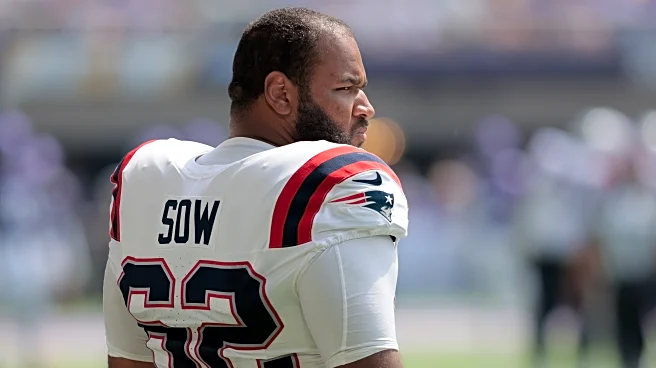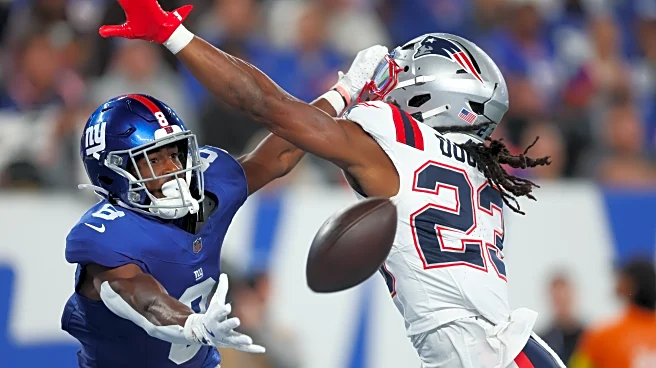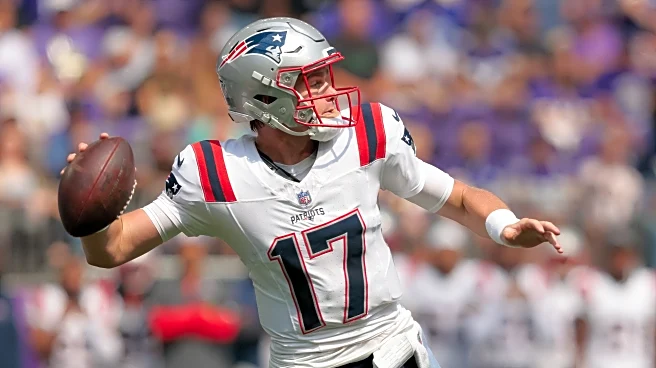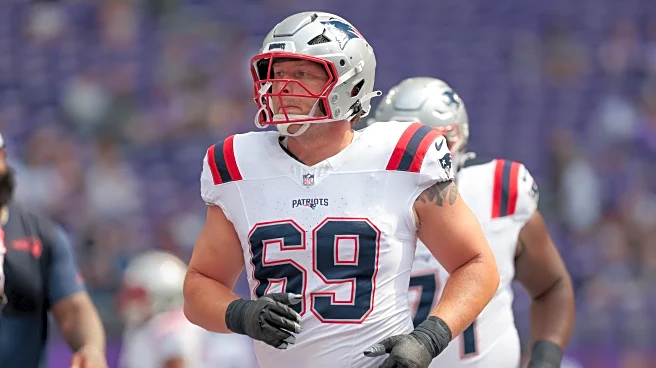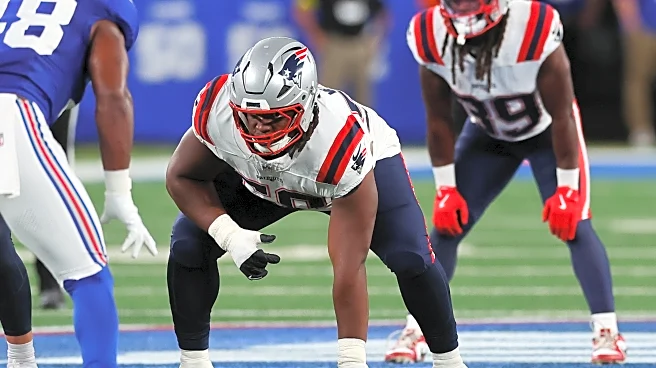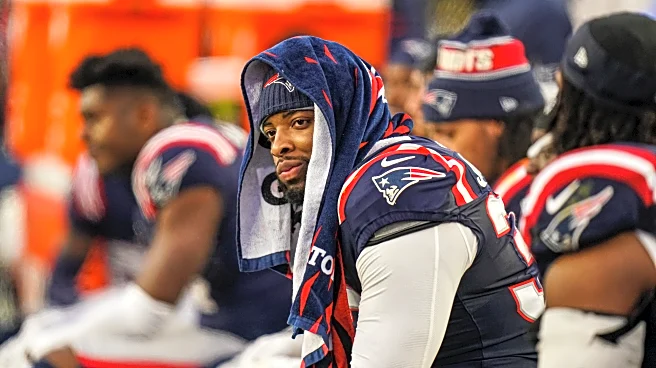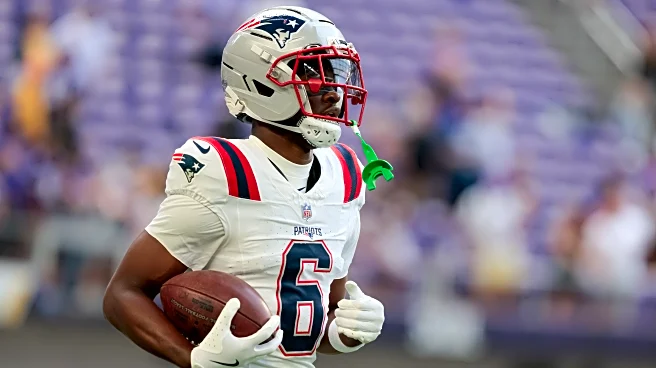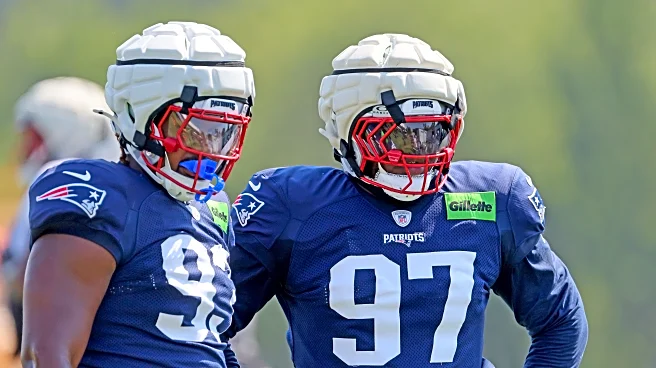
The New England Patriots wasted no time turning the page after their preseason finale. Less than 24 hours after their 42-10 loss to the New York Giants, head coach Mike Vrabel announced that his team had parted ways with 14 players in preparation of the upcoming NFL roster cutdown deadline.
As Vrabel said during a press conference on Friday, quarterback Ben Wooldridge, running backs Micah Bernard and Shane Watts, wide receiver Phil Lutz Jr., tight ends Jaheim Bell and Cole Fotheringham, offensive
linemen Sidy Sow and Tyrese Robinson, defensive tackles Kyle Peko and Philip Blidi, linebackers Monty Rice and R.J. Moten and cornerbacks Jordon Polk and Isaiah Bolden were all informed of their release.
What do those moves mean for the Patriots, though? Let’s take a big-picture look at them to see how they impact the overall roster four days ahead of cutdown day.
No surprises
Of the 14 players released by the Patriots on Friday, none came as a major surprise based on their standing on the projected depth chart and usage in the preseason finale against New York. Led by Ben Wooldridge, who played all 59 offensive snaps on Thursday night, the entire 14-man group saw some level of action — an indication that their spots on the roster were indeed in peril.
Half of the group let go only joined the team after it had already opened its training camp in late July. The other half, meanwhile, had not been able to carve out consistent roles since their own arrival going back as far as the 2023 NFL Draft. Add it all up, and you get a group that found itself on the outside looking in basically the entire summer.
QB3 TBD
Coming off an underwhelming performance against the Giants that saw him go complete just 10 of 20 pass attempts for 82 yards with one touchdown and pick-six each, Ben Wooldridge getting released was the expected outcome of his rookie training camp. That said, him being let go means that the Patriots might be in the market for another quarterback.
At the moment, after all, they only have starter Drake Maye and backup Joshua Dobbs on their roster. While that is sufficient to make it through the season assuming both of them stay healthy, adding another passer to the mix at some point would make sense from a practical perspective: unless the team is comfortable with Dobbs also holding scout team duties, the presence of a third QB — ideally on the yet-to-be-built practice squad — might help with practice operation.
Wooldridge ending up back in that role could happen, but it would not be a surprise if the team explored the market to see who else becomes available for the QB3 role.
Promise unfulfilled
Arguably the most prominent of the 14 players cut by the Patriots is offensive lineman Sidy Sow. A fourth-round draft pick by the team in 2023, he started 13 games as a right guard during his rookie season. The Eastern Michigan product showed some potential in those contests, suggesting that he might have some future starting potential. However, things started to go downhill his sophomore year.
While initially installed as the starting left guard under then-offensive coordinator Alex Van Pelt, Sow suffering an ankle injury in the preseason finale disrupted his development. He made a brief return to the starting lineup in Week 4 that season, but was demoted to backup status from that point on and never managed to reemerge from the depths of the roster.
Not even another change in coordinator, from Van Pelt to Josh McDaniels, put Sow’s career back on track. He spent the spring and summer as little more than a third-stringer, far removed from the promise he had displayed as a rookie.
Salary cap considerations
While most of the players released by the Patriots were on low-level deals, the team’s salary cap will still feel the impact of the moves. Two of the players let go, after all, found themselves on the Top 51 list: Sidy Sow and Monty Rice had cap numbers of $1.22 million and $1.17 million, respectively. Their spots on the list will now be taken by cornerback Alex Austin and running back JaMycal Hasty, whose cap hits are both at $1.03 million.
The cap savings created by replacing Sow and Rice with Austin and Hasty on the Top 51 list, however, are more complex than a simple subtraction would suggest. For starters, Sow’s deal included a fully-guaranteed signing bonus proration of two $191,029 installments each; those will hit New England’s books as dead cap in both 2025 and 2026.
Sow is not the only player affected who had a bonus like that in his pact. The same is true for Jaheim Bell ($27k), Jordan Polk ($3k) and Ben Wooldridge ($2k). Meanwhile, Polk and Wooldridge also had salary guarantees of $35,000 and $9,000 in their deals.
Putting all those plus the Top 51 list into consideration, we can see that the Patriots generated $108,019 in net cap space on Friday. In addition, their dead cap numbers increased by $267,010 and $254,992, respectively the next two years.
Return potential
Getting released this early in the process suggests the Patriots are willing to move on for good. However, there is a chance that some of the players let go eventually return via the practice squad if they clear the waiver wire (all but vested veterans Kyle Peko and Monty Rice will have to go through waivers).
New England can start building its first developmental roster of the 2025 season next Wednesday, after the cutdown deadline and subsequent waiver claim period have passed.
First shoe to drop
Their first wave of roster cuts is just the tip of the iceberg for the Patriots. Until Tuesday 4 p.m. ET, they will have to remove 24 more players from a roster that currently stands at 77 deep. Not all of them will have to be released, however; moving players to injured reserve or trading them will also do the trick.
The Patriots have candidates for both of those other methods on their roster at the moment. Wide receiver Ja’Lynn Polk, for example, is expected to be moved to IR soon. Meanwhile, safety Kyle Dugger and outside linebacker Anfernee Jennings are regarded as potential trade candidates.
